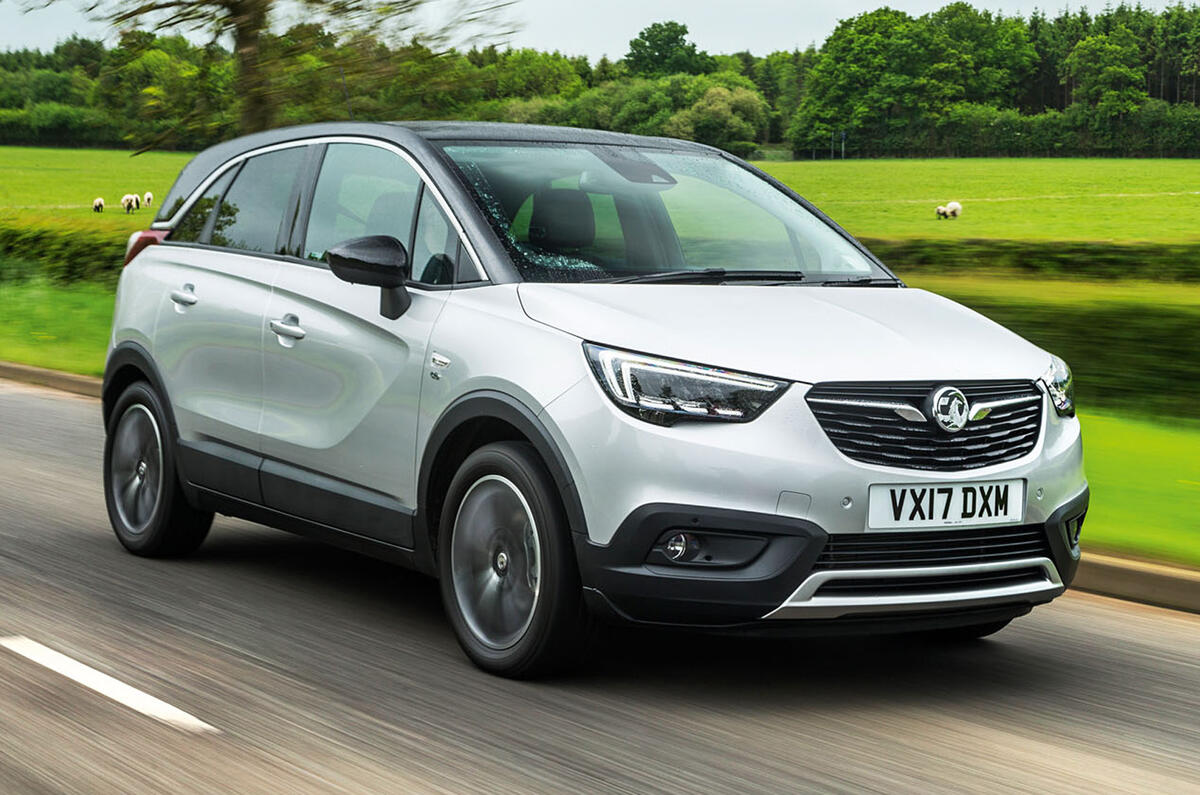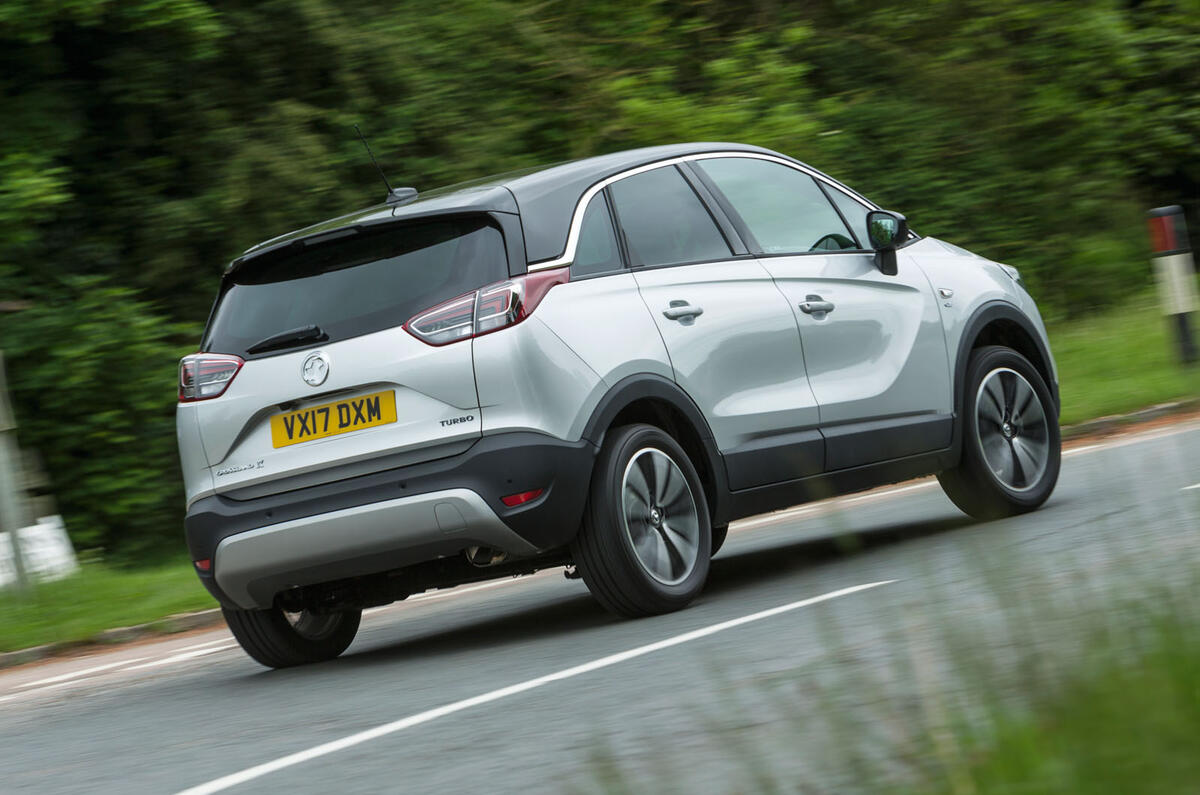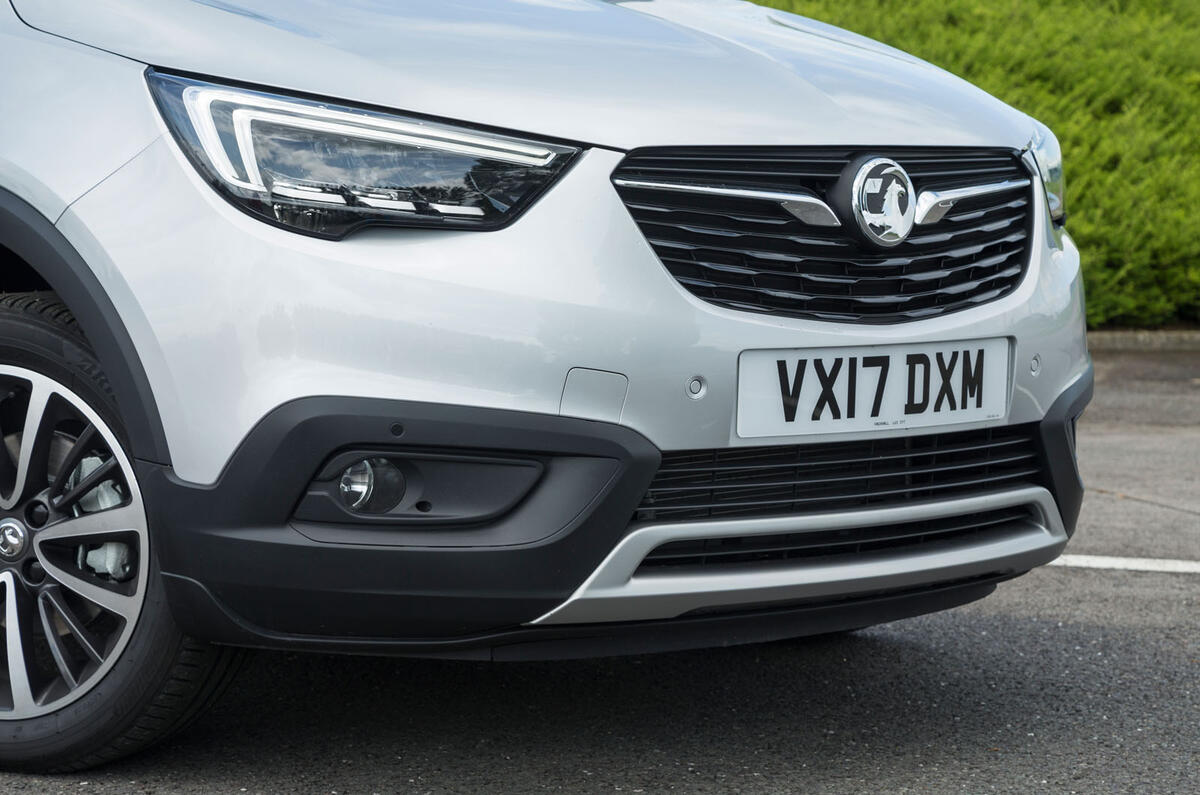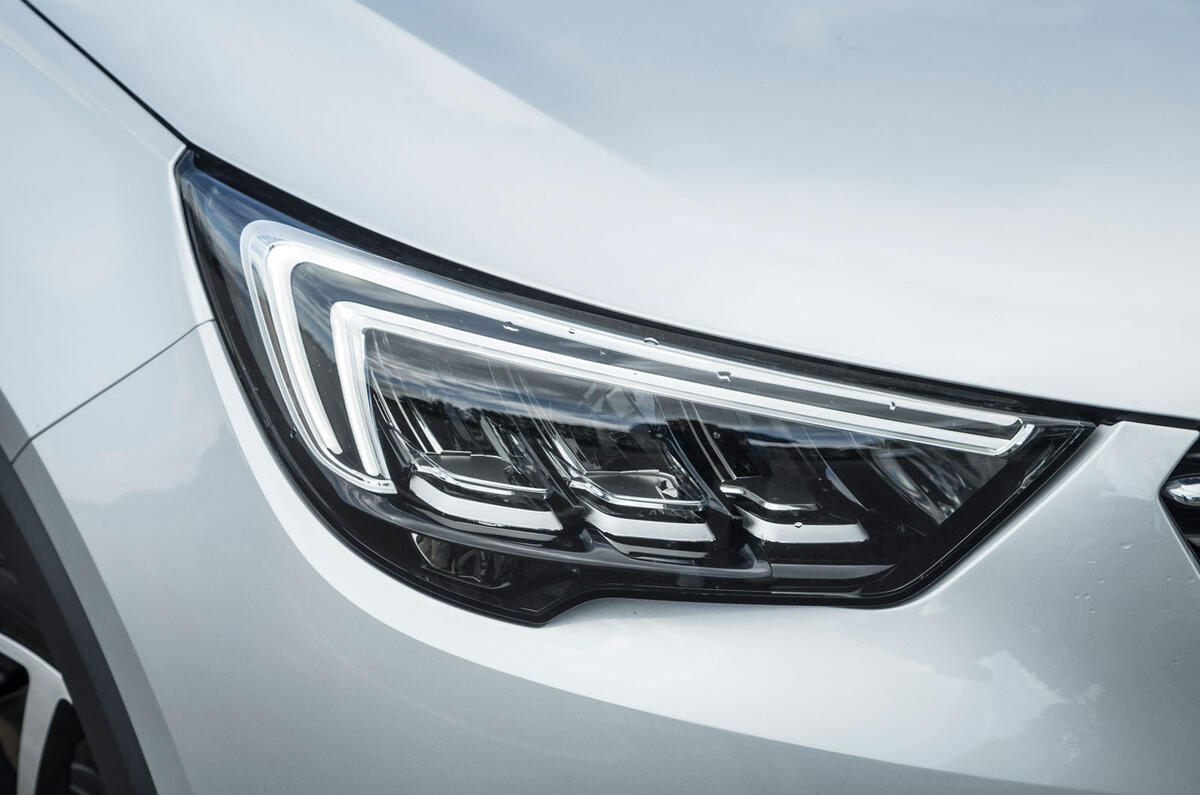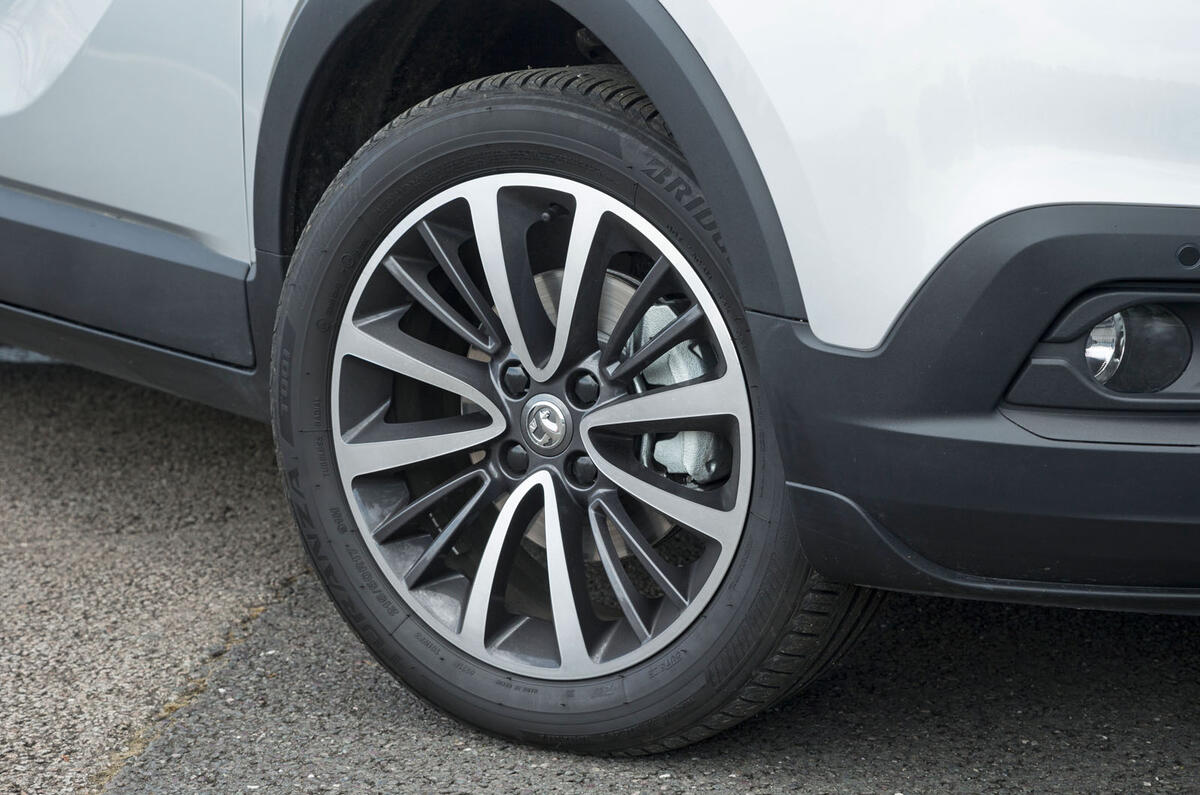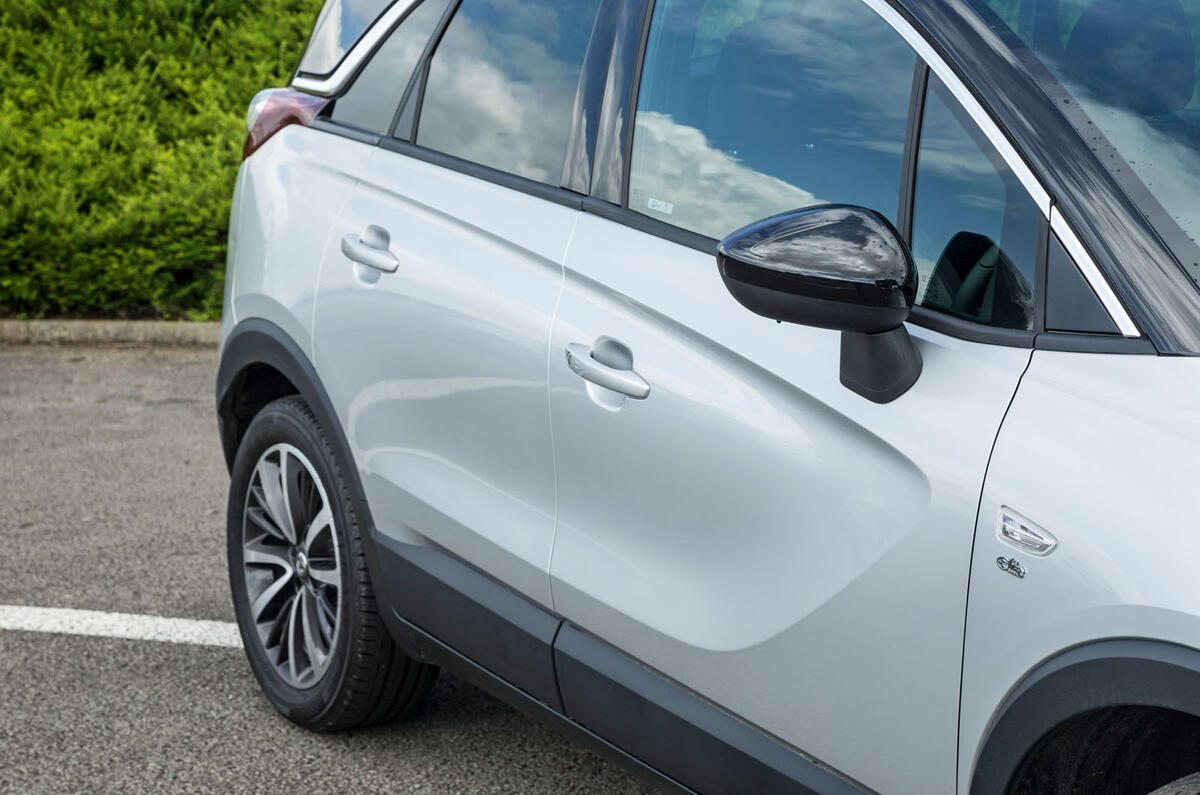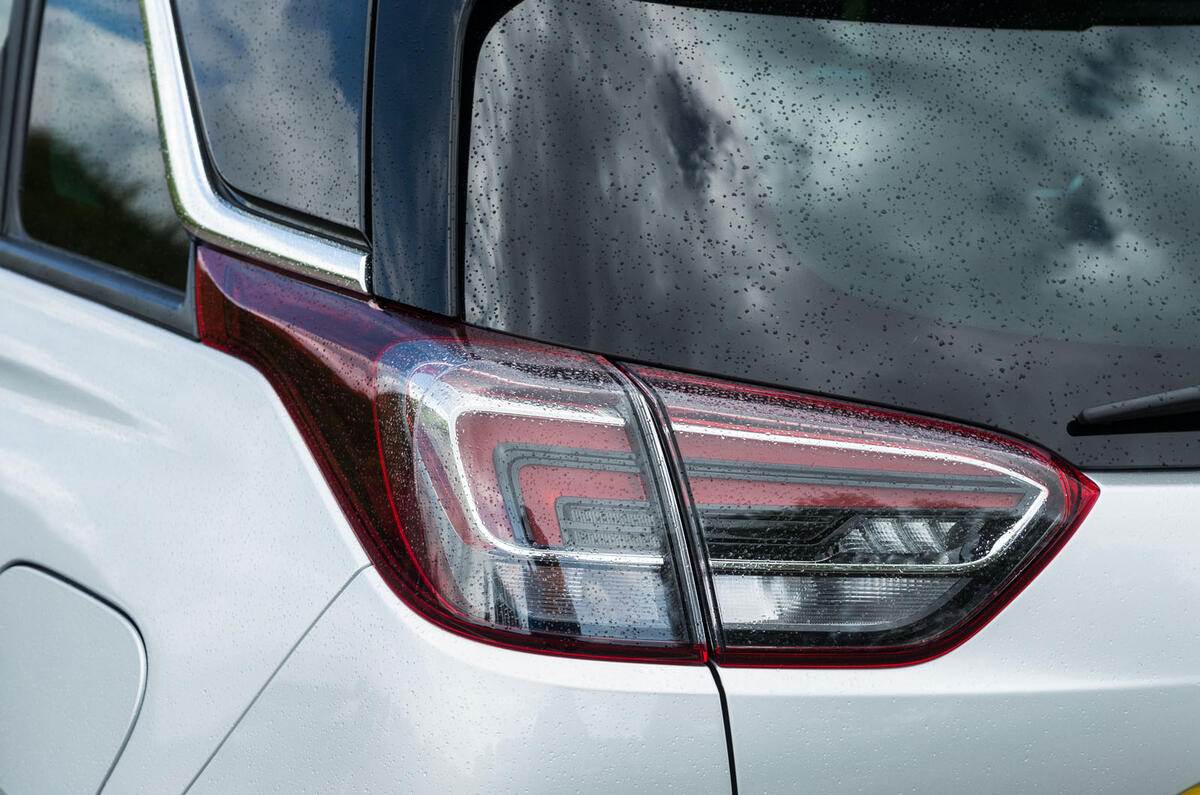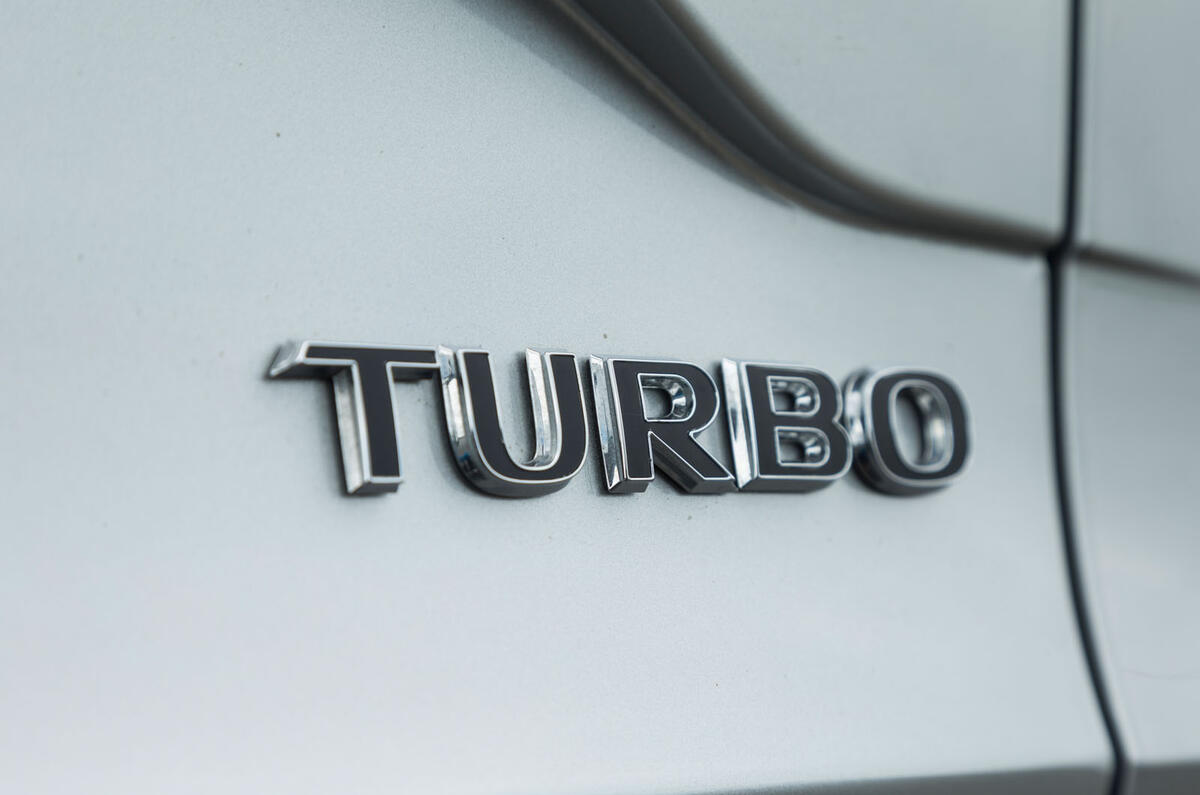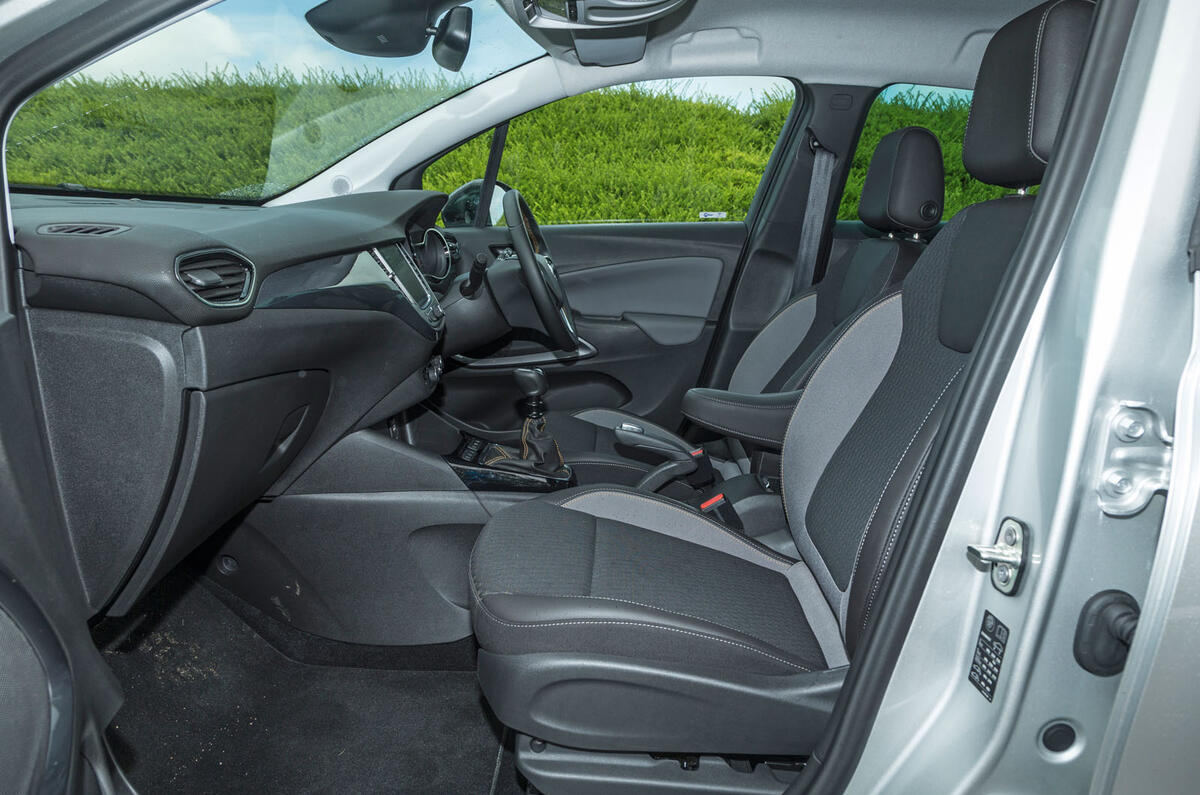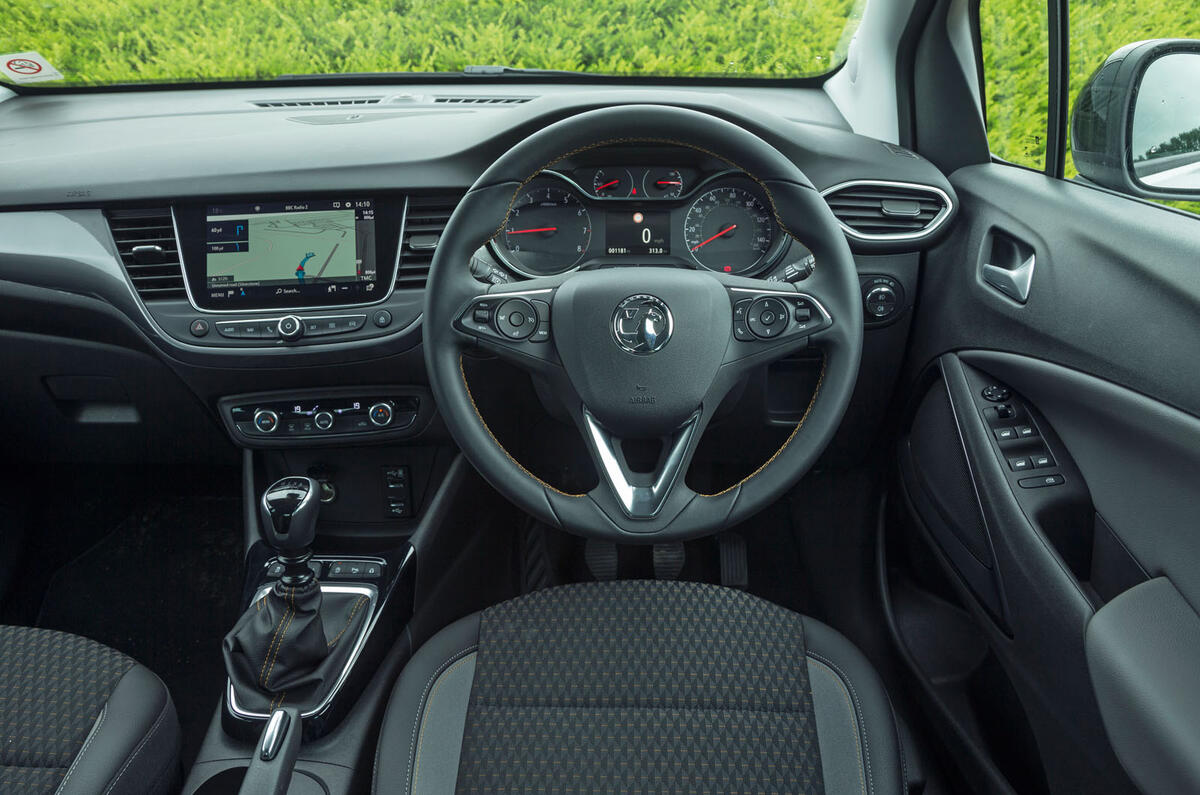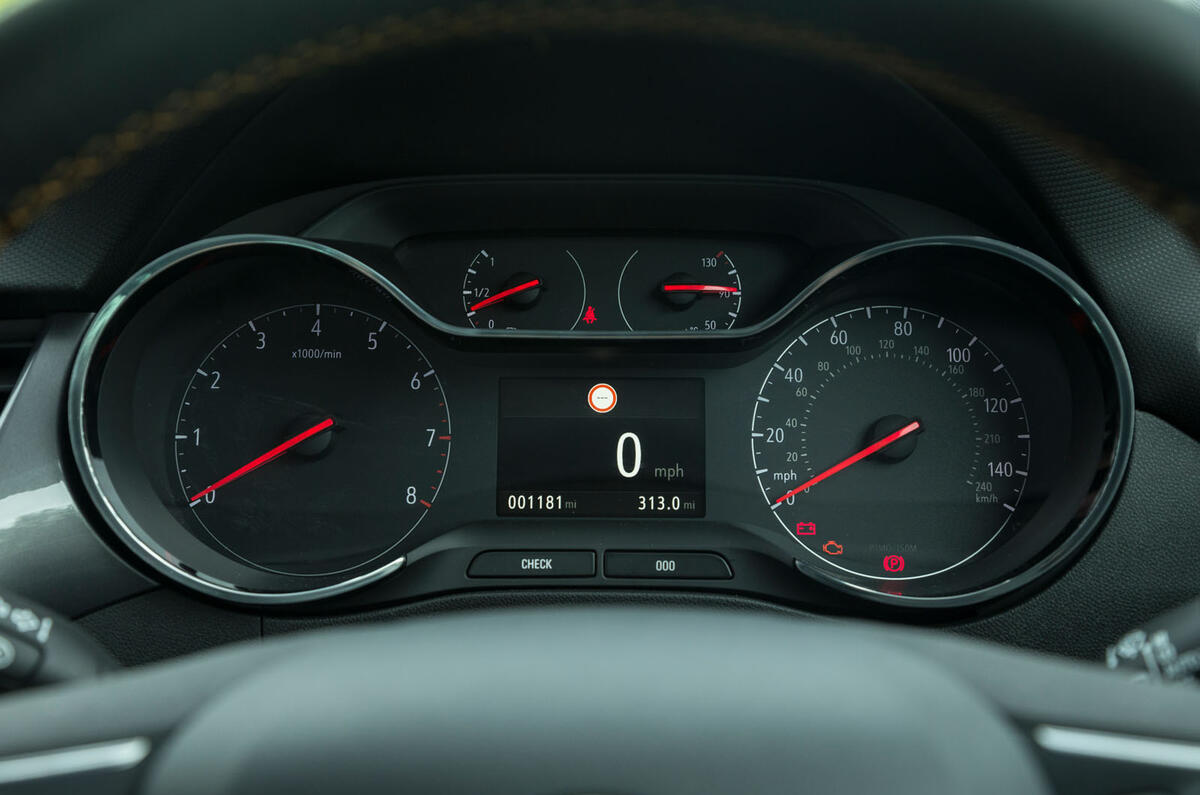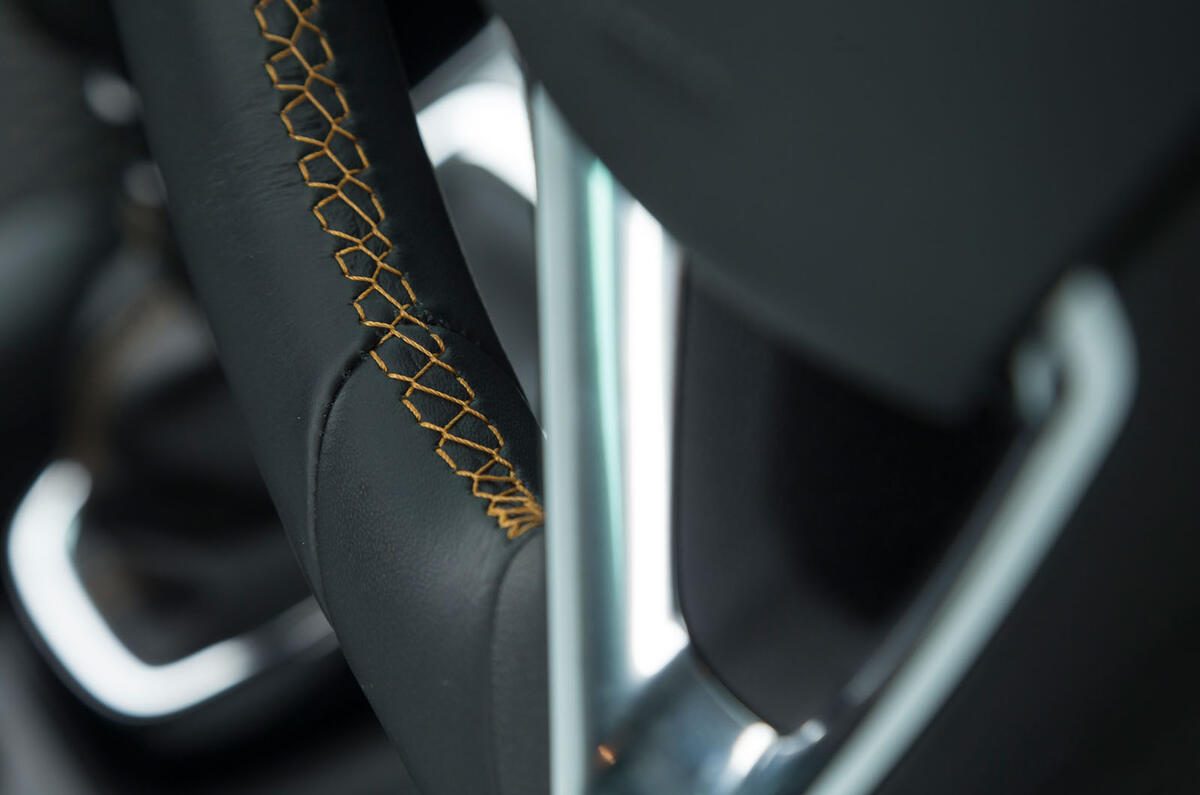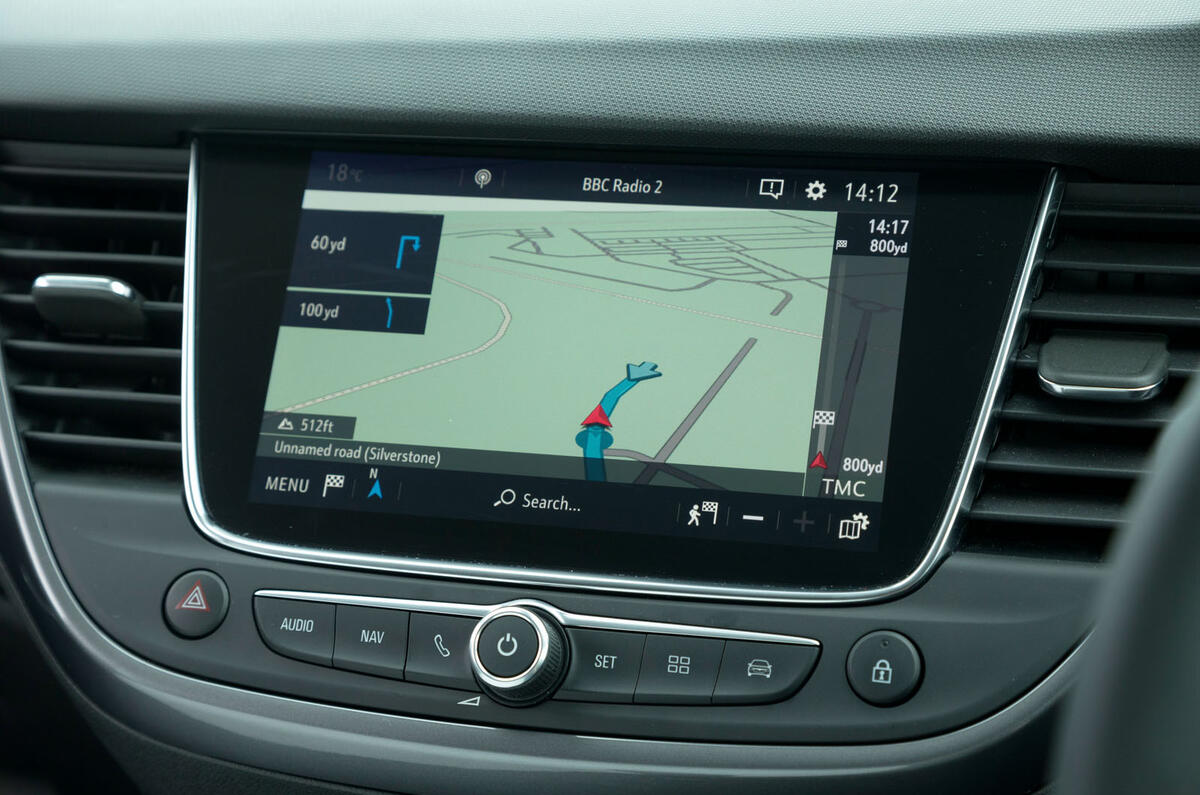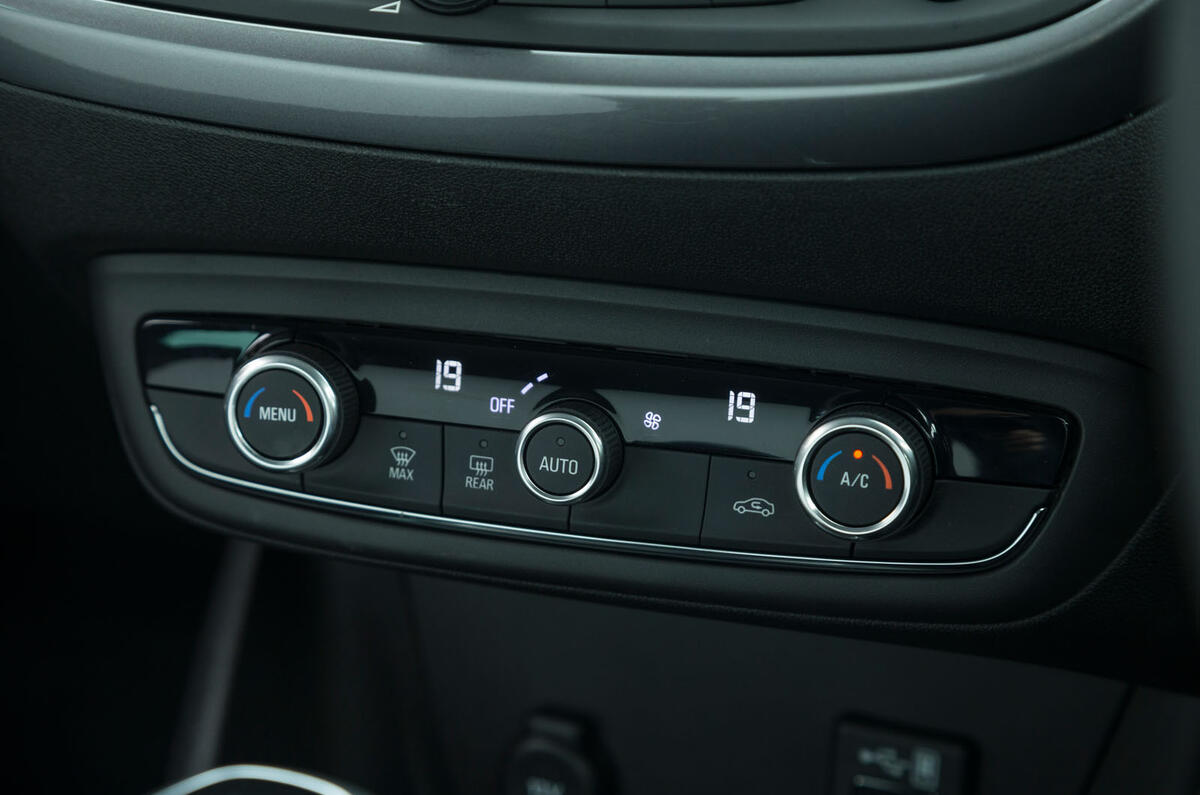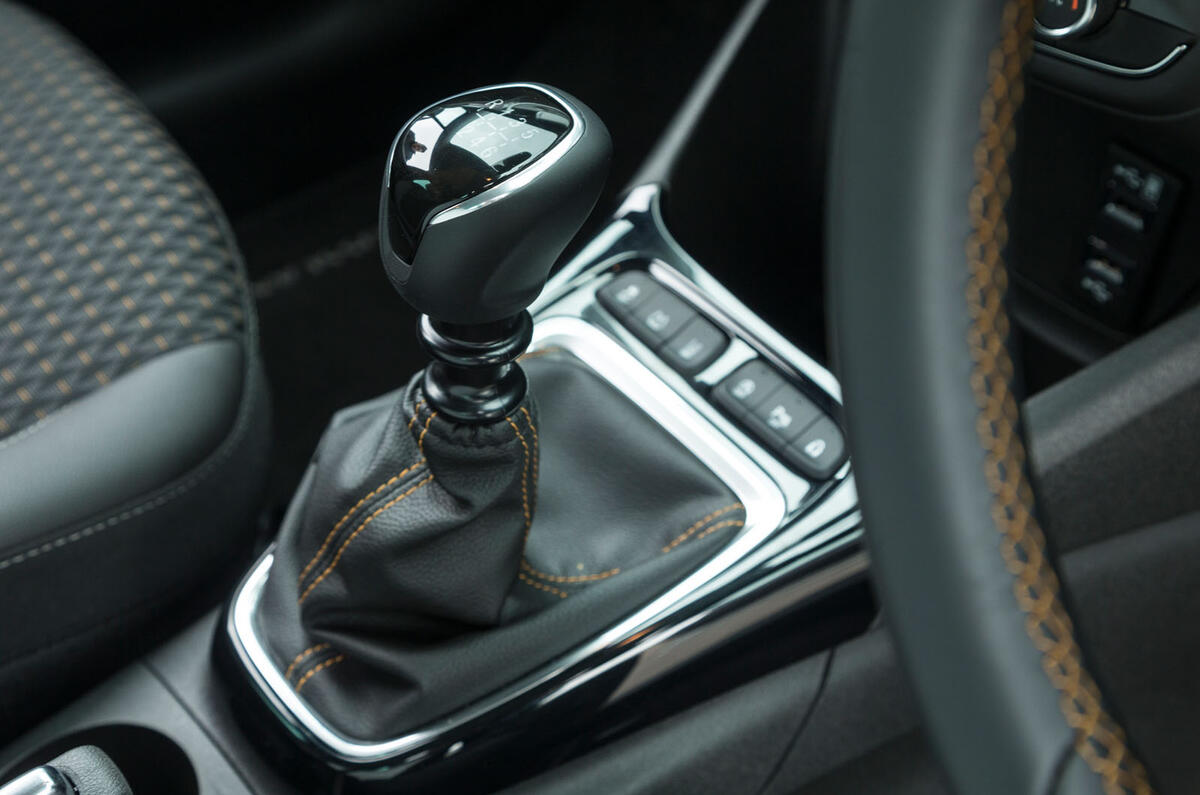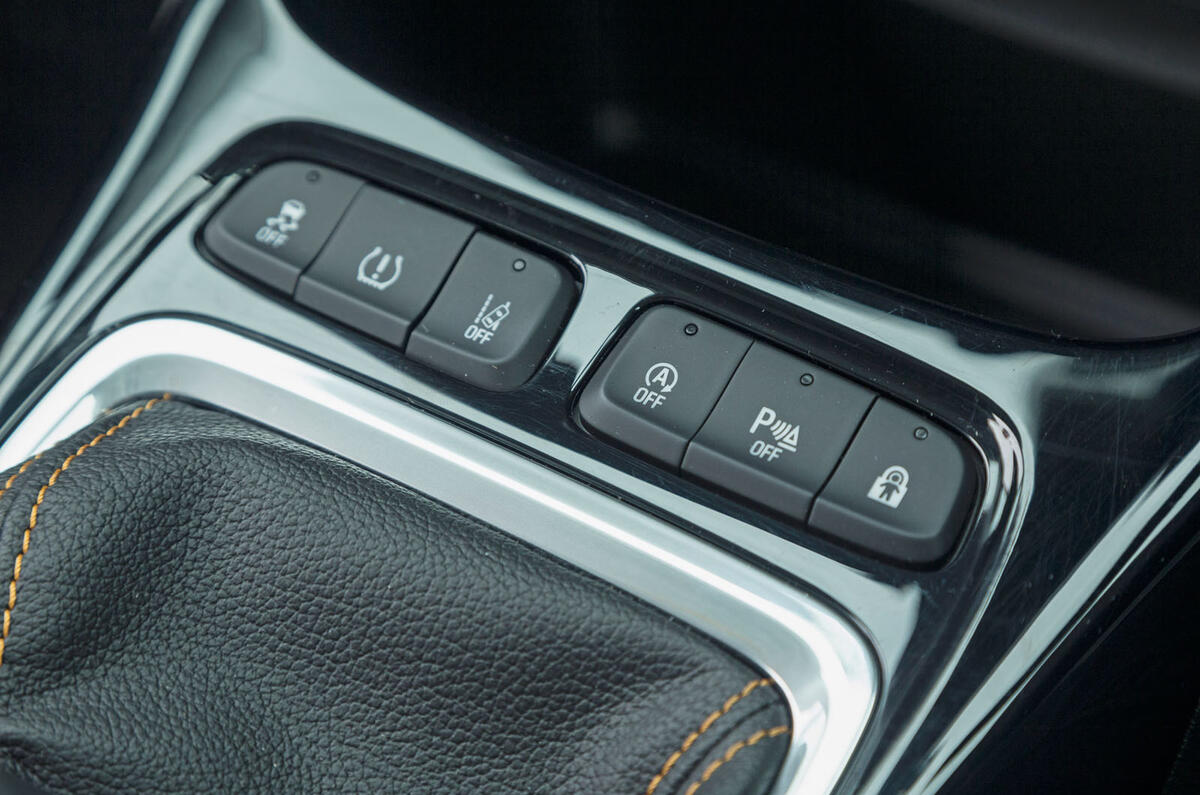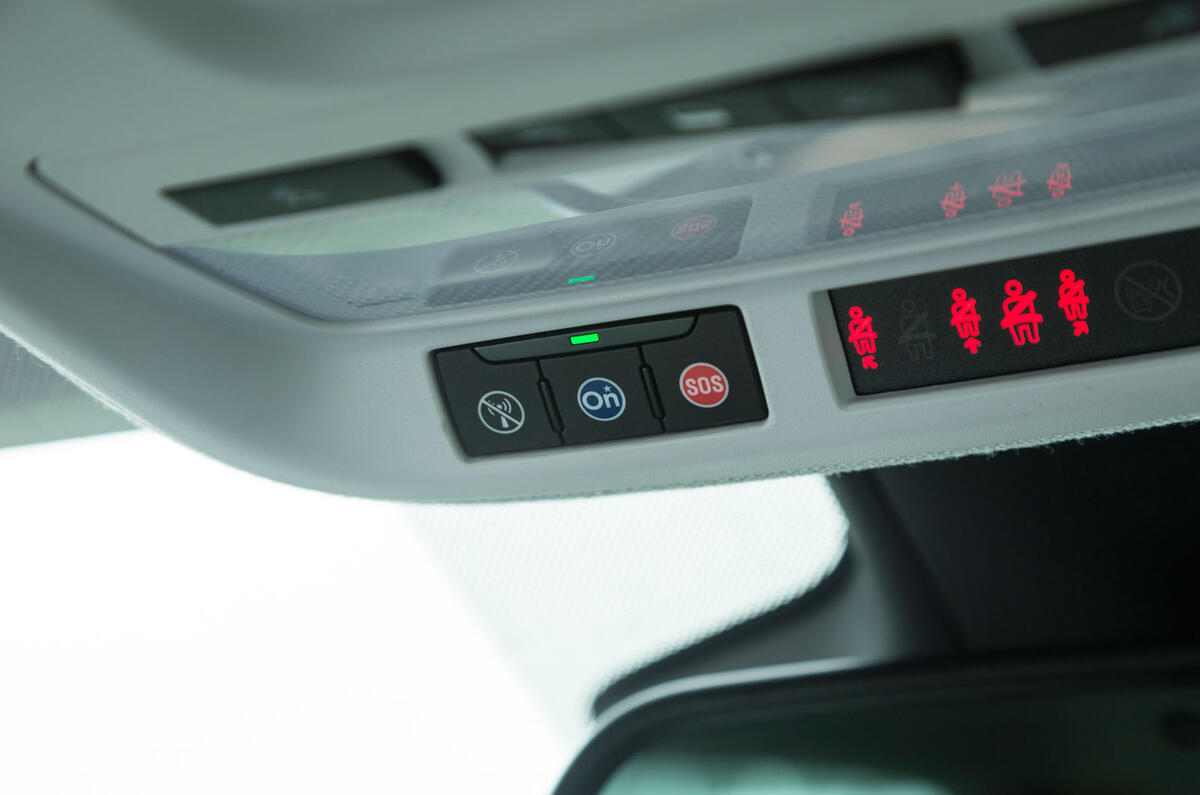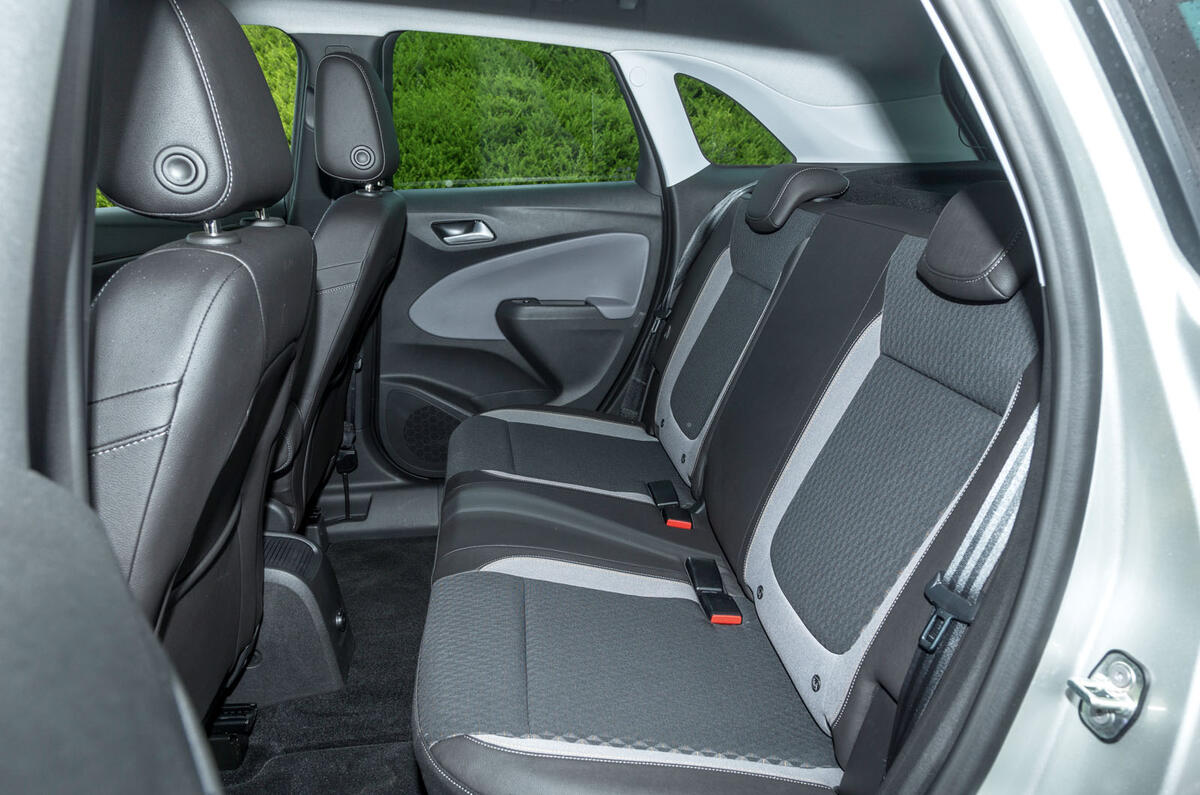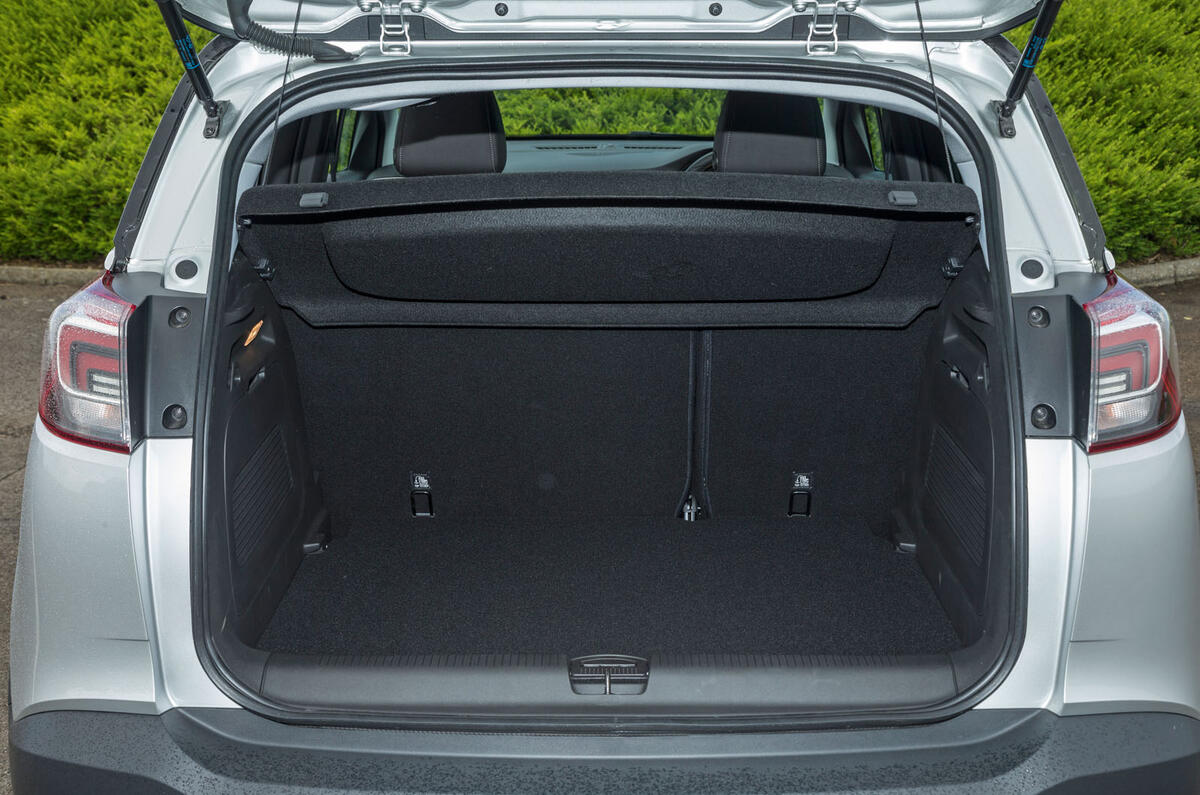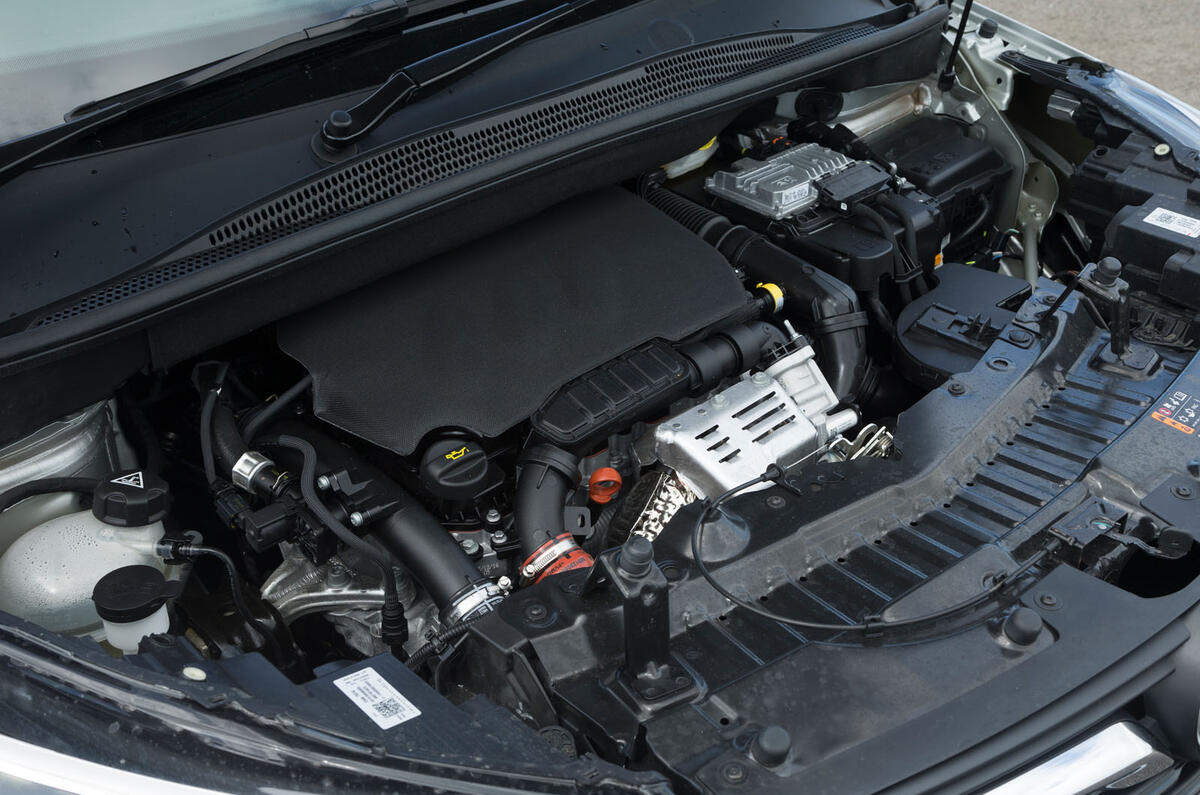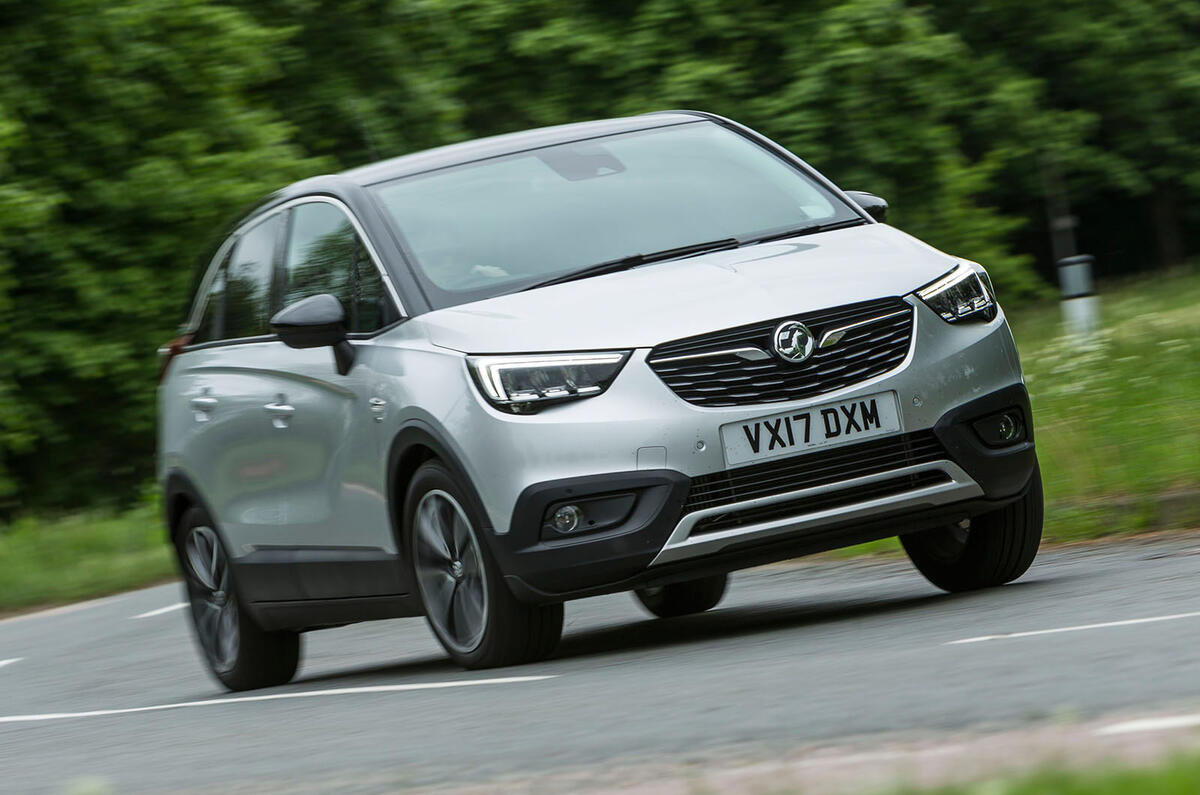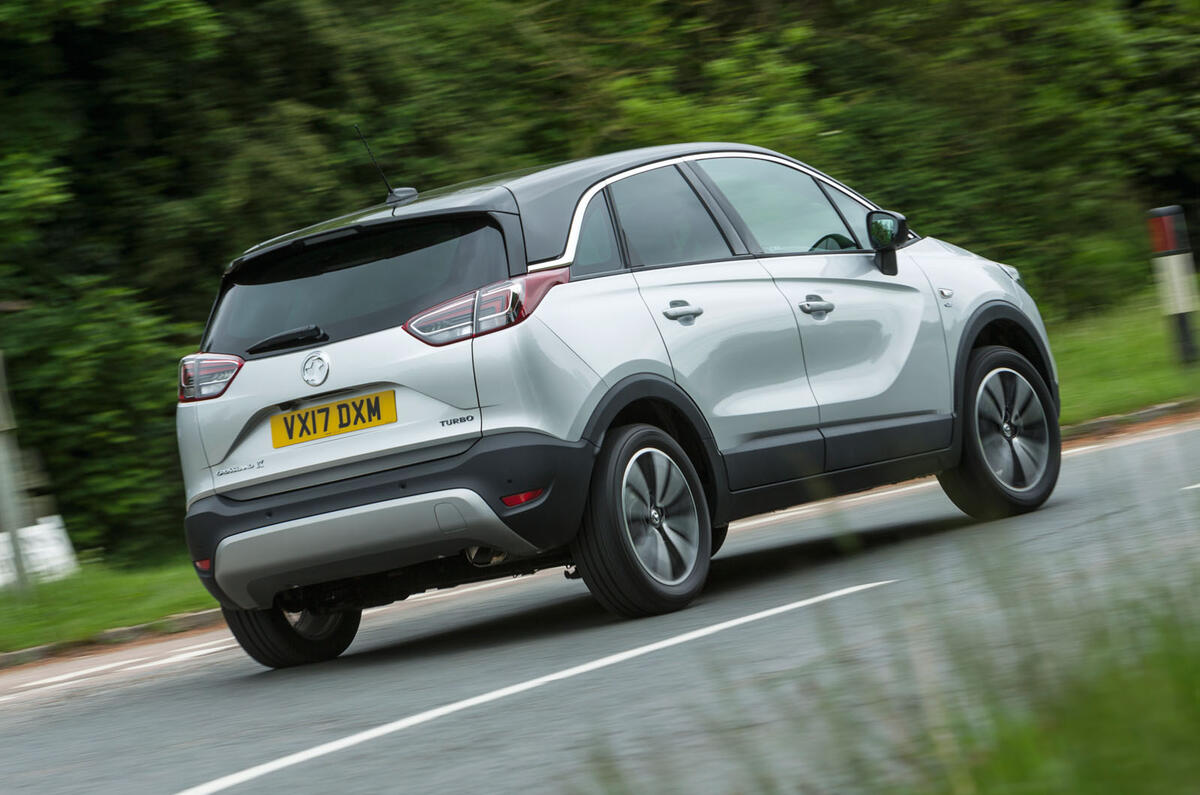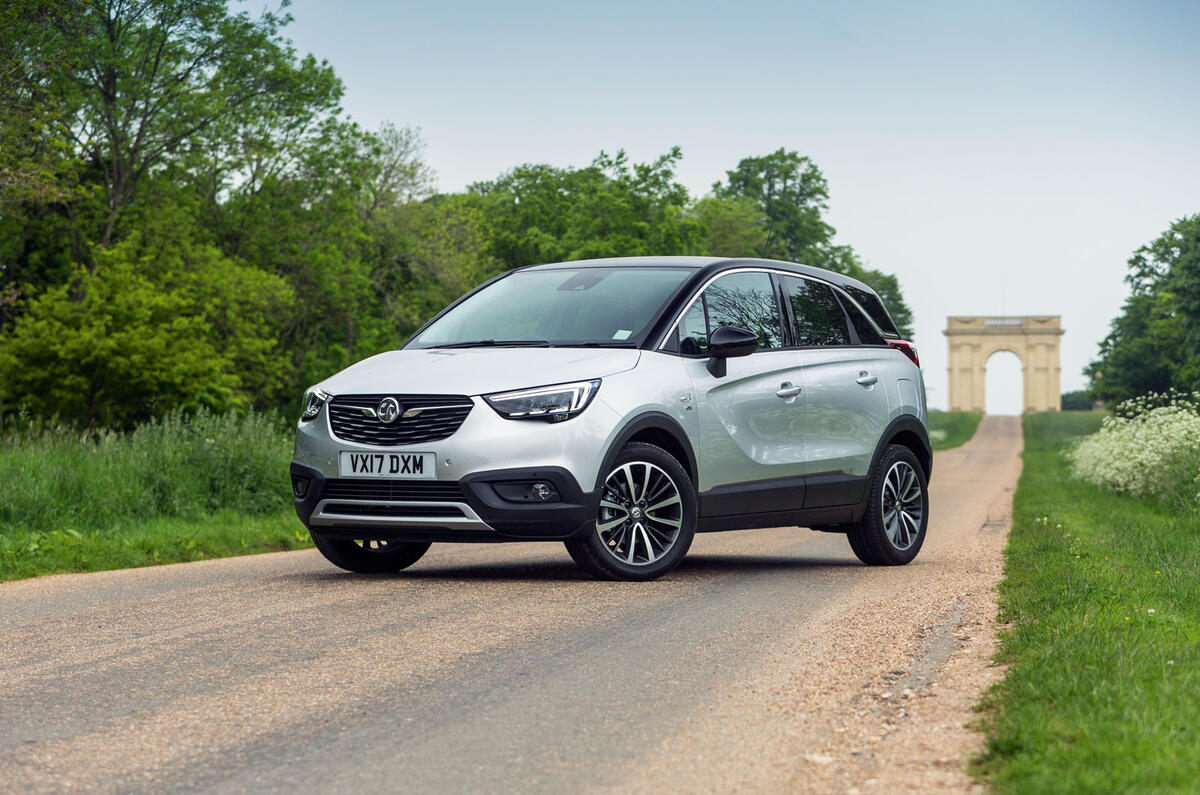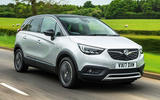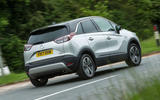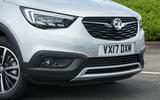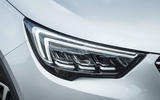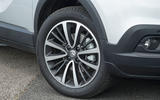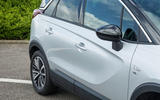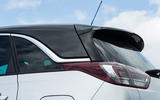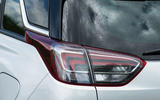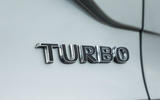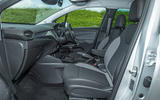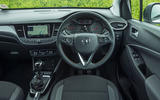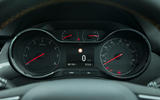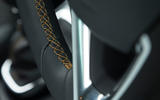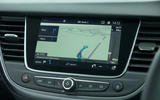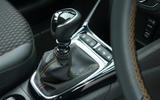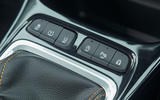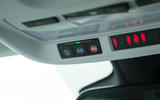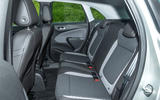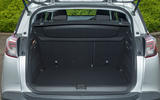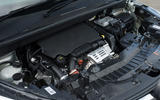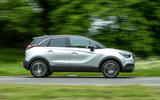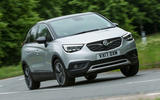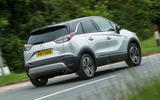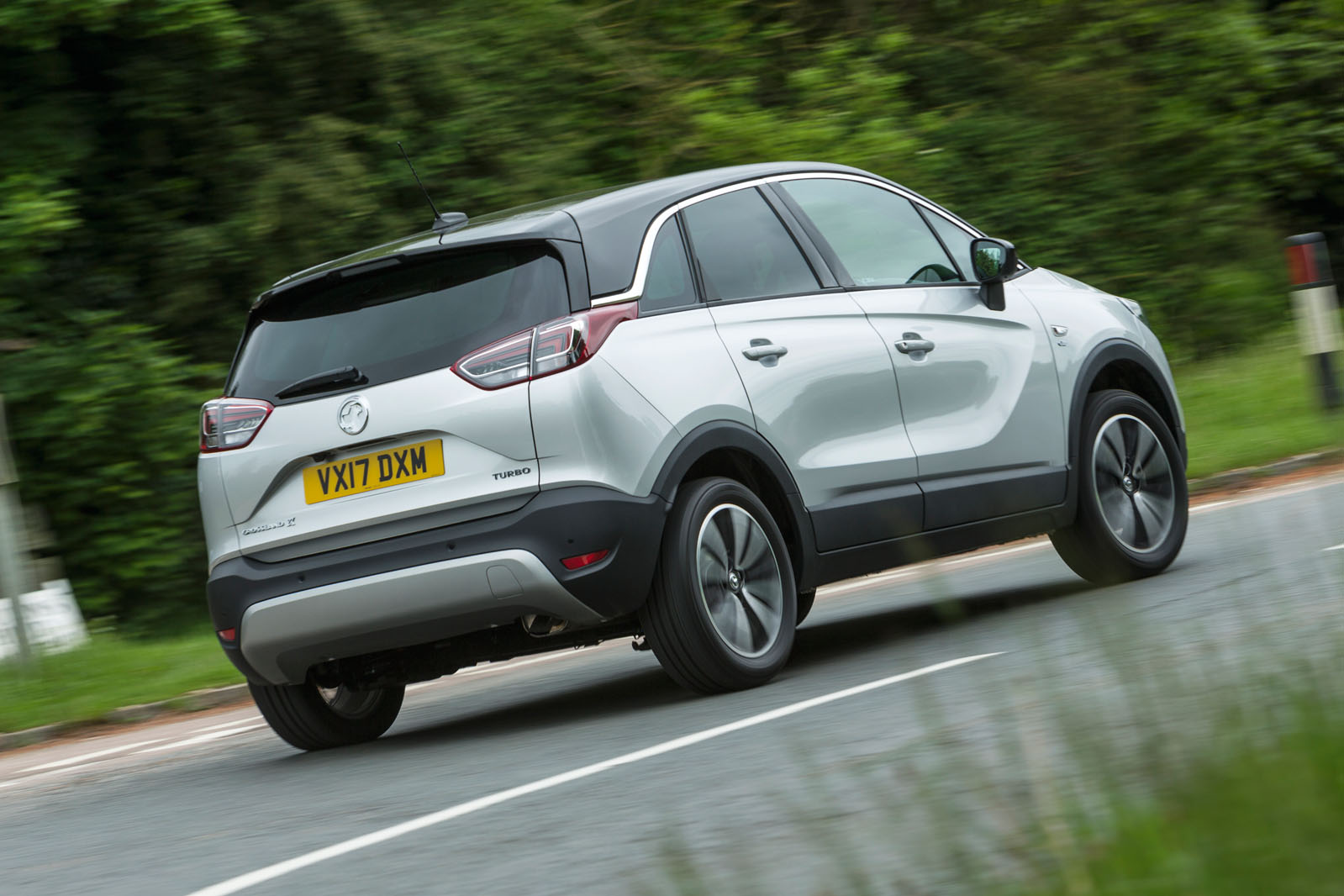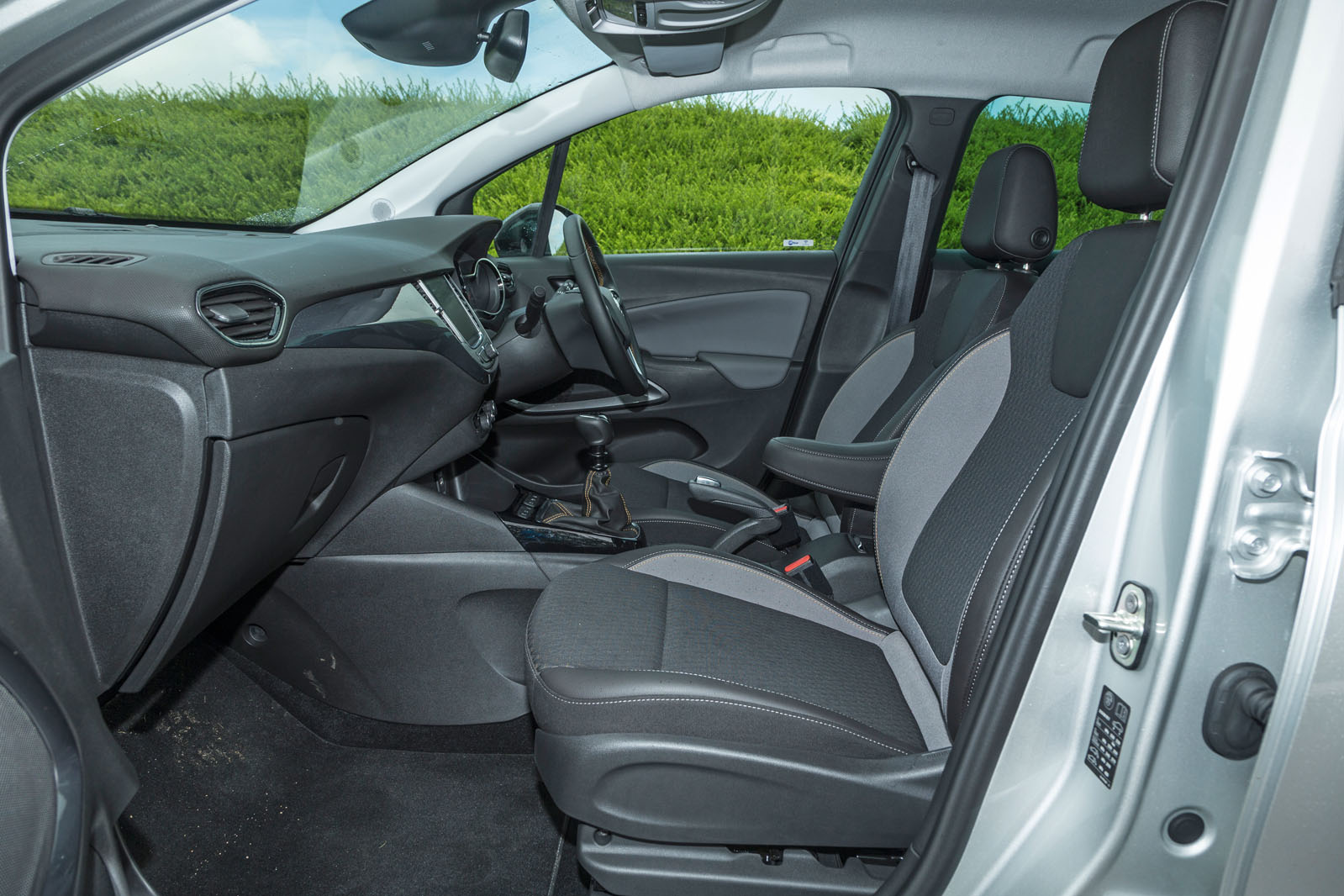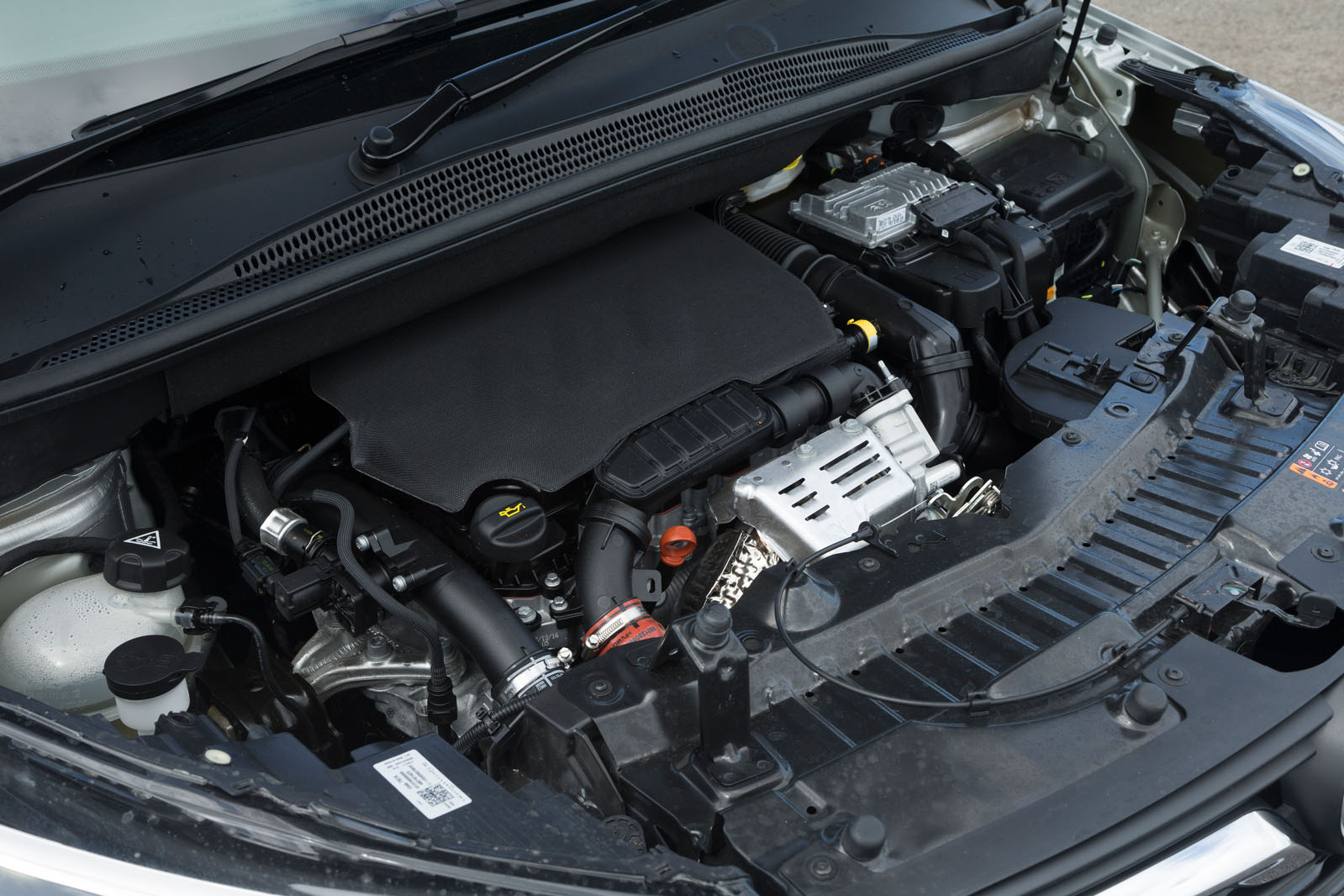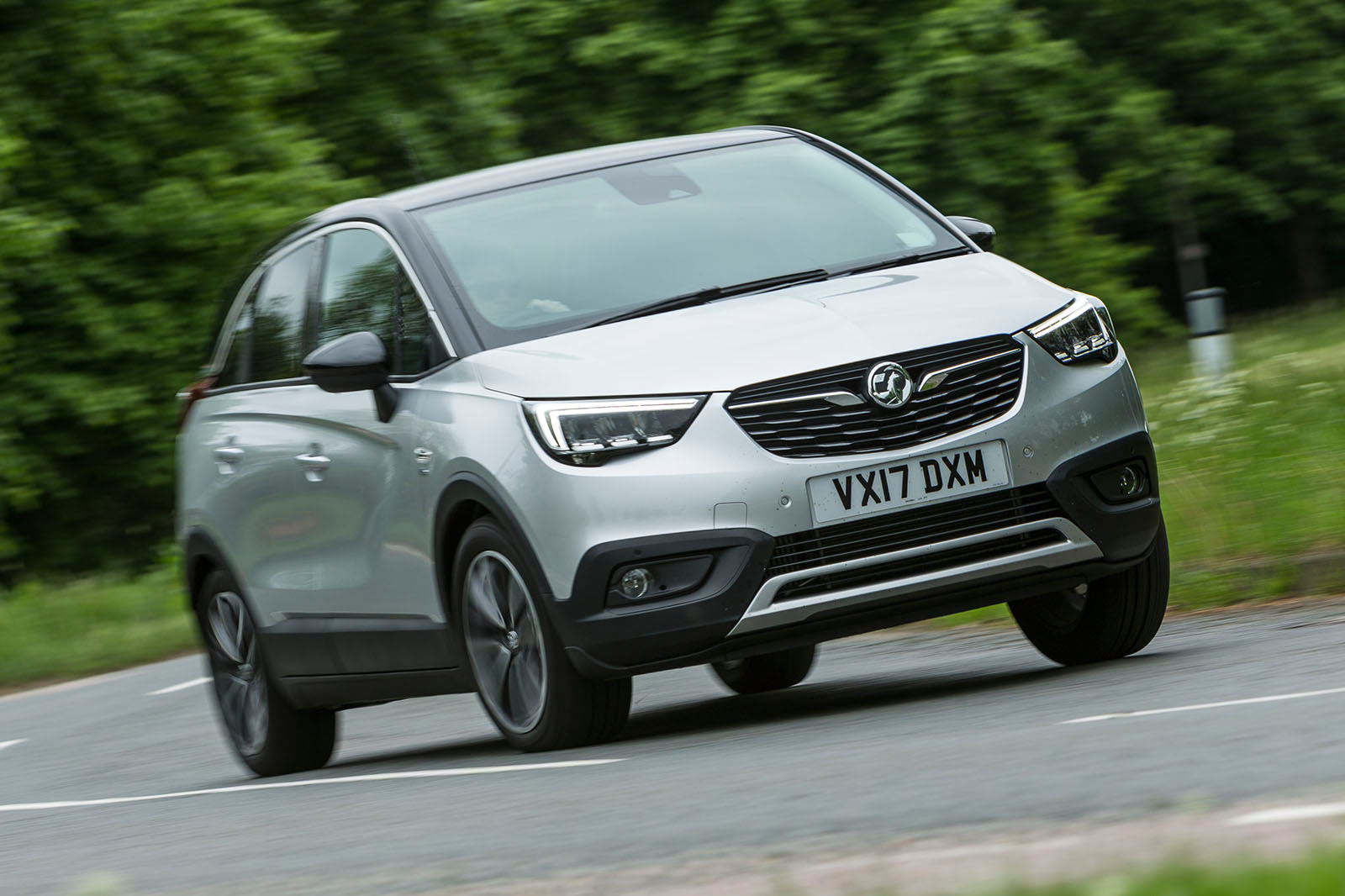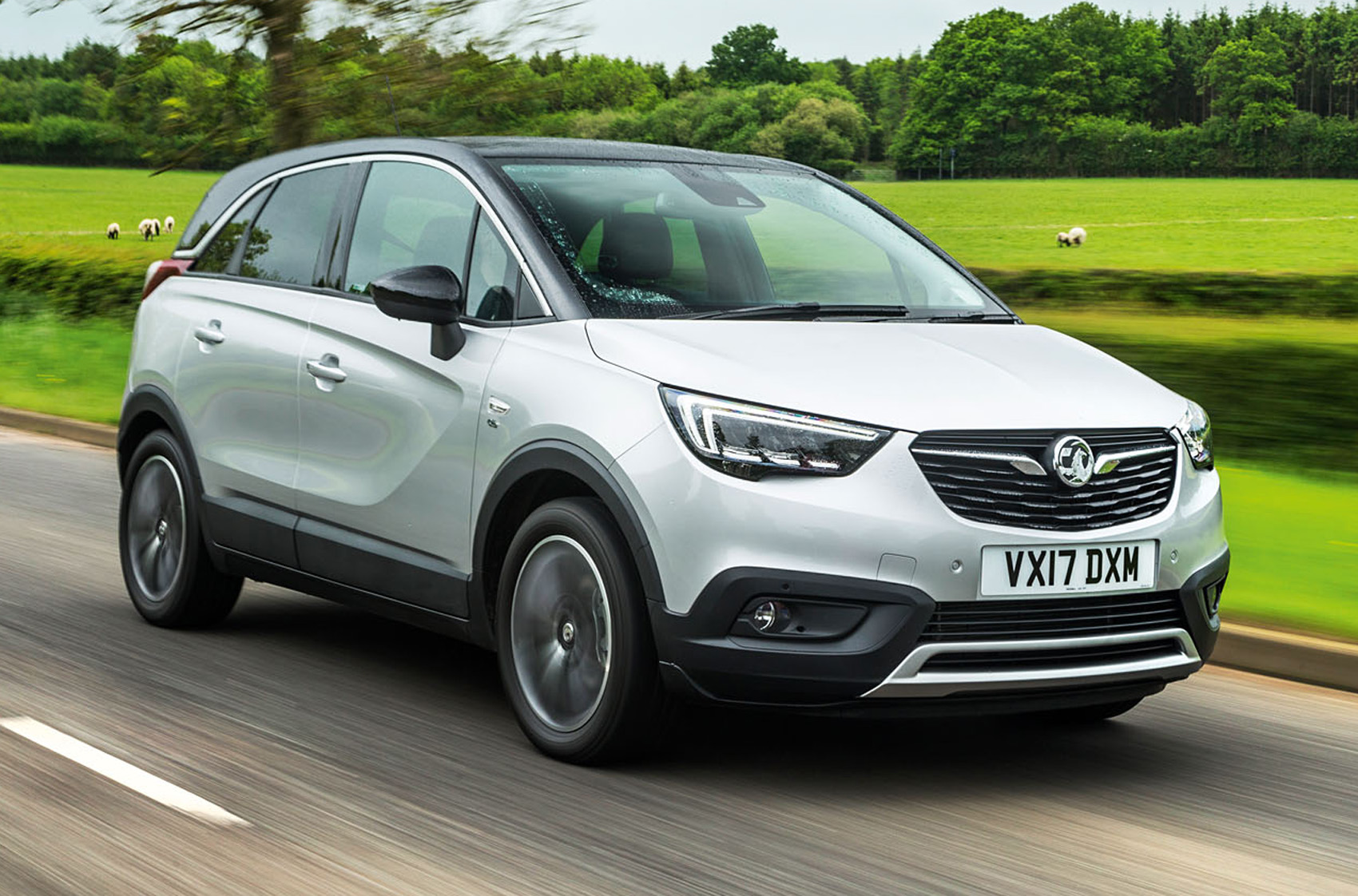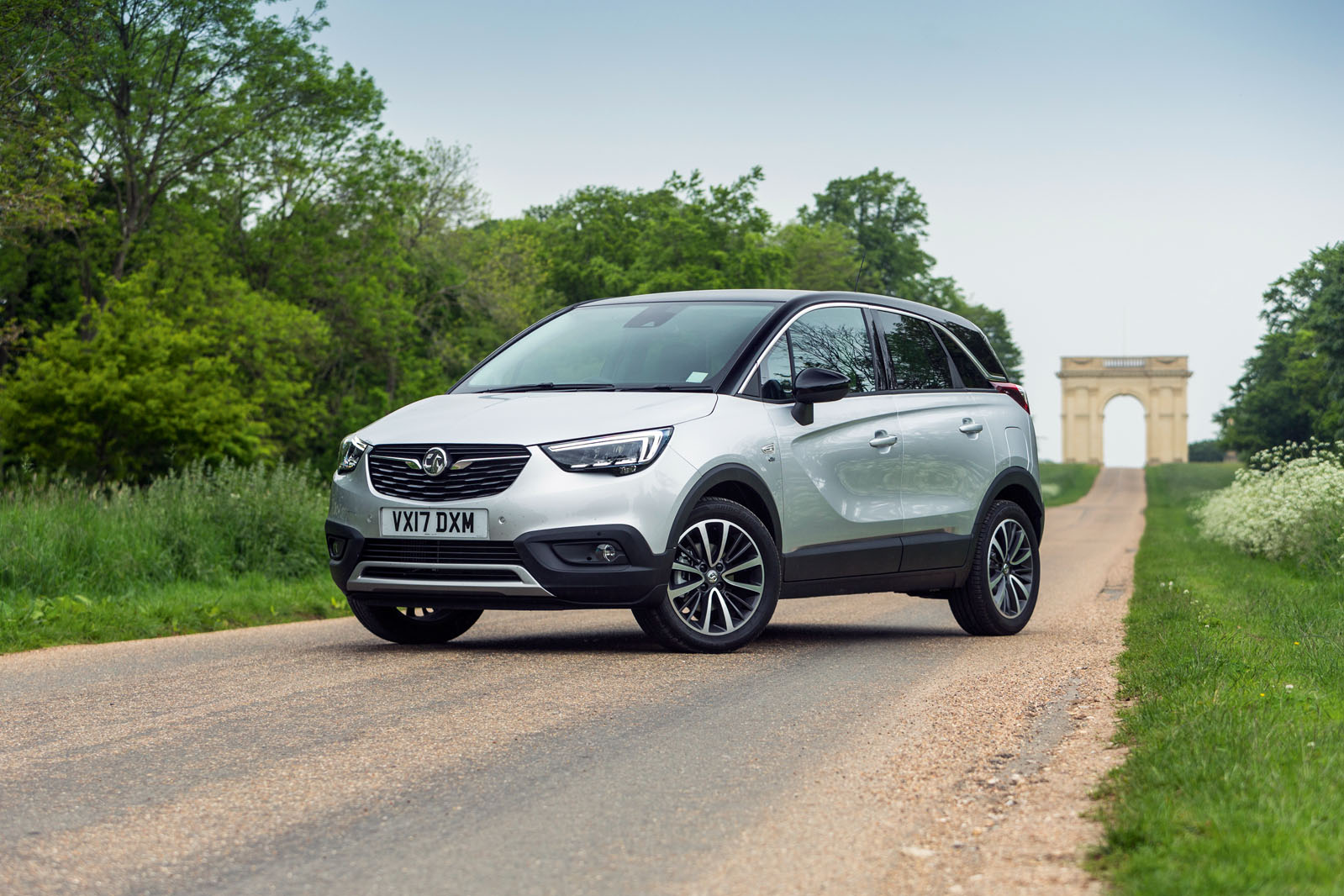The Crossland X neatly avoids the pitfall that so many small crossovers stumble into in as much as it’s roomy enough inside to be an alternative to a normal five-door hatch.
If you want to give rear passengers as much leg room as they’ll find in, say, a Vauxhall Astra, you’ll have to take advantage of the opportunity to sit more upright than you would in the bigger sibling, but you needn’t otherwise.
The driver’s seat is comfortable if a bit flat but it offers lots of vertical base height adjustment, so you can sit with your scalp either close to the headlining with a good view all round, or much lower and feel more like you’re in a conventional five-door hatchback.
There’s good head room even for taller adults in the back seats, although three adults would be a squeeze back there. Leg room is only about adequate. It may be better with the Crossland X’s sliding rear bench, but that comes only as part of a £300 option pack – and our test car didn’t have it.
On boot space, the Vauxhall does a very competitive but not outstanding job, according to our tape measure, putting itself ahead of the Mazda CX-3 but being beaten narrowly by the Suzuki Vitara.
Again, if the marketing spin is that you’re getting hatchback space in a cleverer package, it’s a small fib: an Astra has narrowly more loading length and width although, predictably, there’s more loading height available in the Crossland X.
You do get a variable-height boot board, though, allowing split-level storage, should you want it.
Casting an eye around the cabin’s fixtures and fittings reveals switchgear you’ll recognise from both PSA’s parts shelves (window switches, pedals, interior door handles) and Opel-Vauxhall’s (headlight controls, column stalks, heater controls).
The upshot is an interior that’s a mish-mash of fonts, grains and finishes, and that has a handful of quietly classy and stylish touches but just as many hard, shiny plastics. The overall impression of the cabin is agreeable and inoffensive, with a good ergonomic layout and instruments that are visible and readable – and you can’t say all of that about a Peugeot 2008.
Vauxhall’s OnStar — billed as ‘your personal onboard assistant’ — and 4G wi-fi hotspot features are big draws for both the Astra and the Insignia, but although it may sound the same, what you get in the Crossland X isn’t quite equivalent.
Whereas the Crossland X’s sibling models effectively come with their own data connection, you have to supply your own here.
Vauxhall gives you a 7.0in IntelliLink colour touchscreen with DAB radio, Apple and Android smartphone mirroring and voice control as standard. You can upgrade to an 8.0in set-up fitted with satellite navigation and an extra USB input point for £710.
A premium six-speaker audio system (with a sub-woofer) and wireless phone charging are additional options.
The navigation system’s mapping is better than that found in plenty of Peugeots and Citroëns and destinations are particularly easy to set. Bluetooth call functionality was hit and miss in our test car, but Apple CarPlay worked well.


